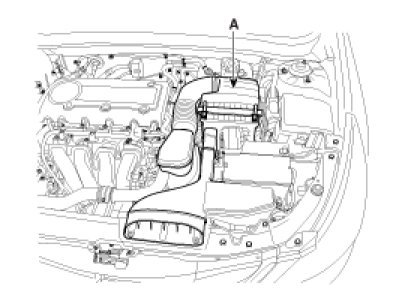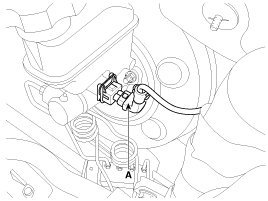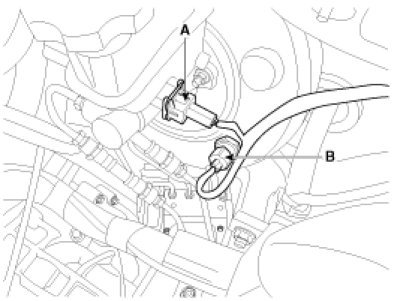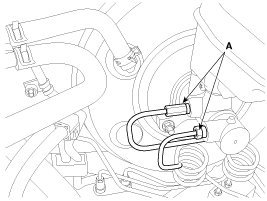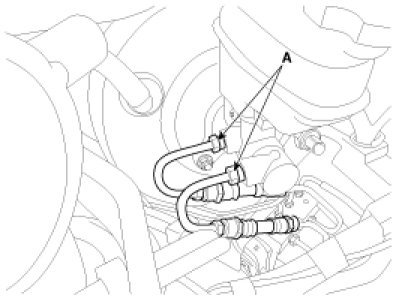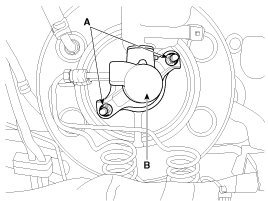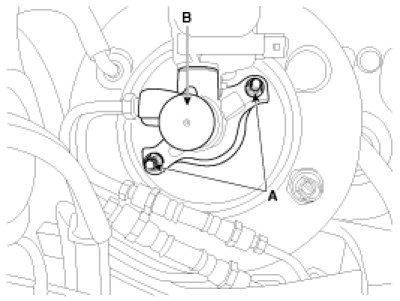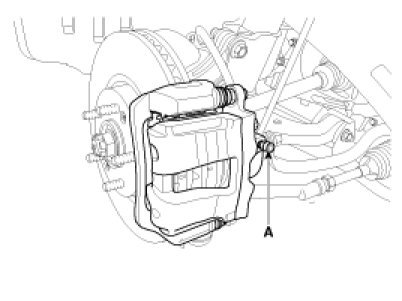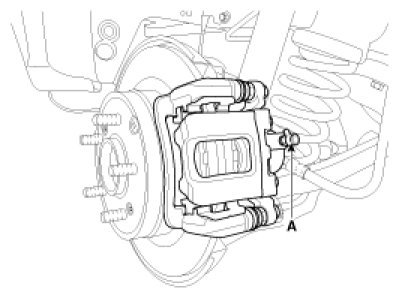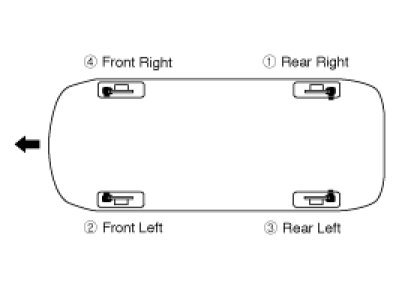Hi,
Basically, what you are describing sounds like the MC is bad. Since there are no leaks, the plungers in the master cylinder are most likely allowing fluid to bypass resulting in the pedal issue.
As far as replacement, it isn't that bad of a job. Here is a link that shows in general how it is done:
https://www.2carpros.com/articles/how-to-replace-a-brake-master-cylinder
___________________________
Here are the directions specific to your vehicle. The attached pictures correlate with the directions.
___________________________
2014 Hyundai Sonata L4-2.0L Turbo
Repair Procedures
Vehicle Brakes and Traction Control Hydraulic System Brake Master Cylinder Service and Repair Removal and Replacement Repair Procedures
REPAIR PROCEDURES
Removal
1. Turn ignition switch OFF and disconnect the negative (-) battery cable.
2. Remove the air cleaner assembly (A).
pic 1
3. Disconnect the brake fluid level switch connector (A), and vacuum switch connector (B).
[2.4 GDI]
pic 2
[2.0 T-GDI]
pic 3
4. Remove the brake fluid from the master cylinder reservoir with a syringe.
CAUTION:
- Do not spill brake fluid on the vehicle, it may damage the paint; if brake fluid does contact the paint, wash it off immediately with water.
5. Disconnect the brake tube (A) from the master cylinder by loosening the tube flare nut.
Tightening torque:
18.6 - 22.6 N.m (1.9 - 2.3 kgf.m, 13.7 - 16.6 lb-ft)
[2.4 GDI]
pic 4
[2.0 T-GDI]
pic 5
6. Remove the master cylinder (B) from the brake booster after loosening the mounting nuts (A).
Tightening torque:
12.7 - 16.7 N.m (1.3 - 1.7 kgf.m, 9.4 - 12.3 lb-ft)
[2.4 GDI]
pic 6
[2.0 T-GDI]
pic 7
Installation
1. Installation is the reverse of removal.
2. After installation, bleed the brake system.
(Refer to Brake System Bleeding)
_________________________________________
Here are the directions for brake bleeding.
2014 Hyundai Sonata L4-2.0L Turbo
Procedures
Vehicle Brakes and Traction Control Hydraulic System Brake Bleeding Service and Repair Procedures
PROCEDURES
Brake System Bleeding
CAUTION:
- Do not reuse the drained fluid.
- Always use genuine DOT3/DOT4 brake Fluid.
Using a non-genuine DOT3/DOT4 brake fluid can cause corrosion and decrease the life of the system.
- Make sure no dirt or other foreign matter is allowed to contaminate the brake fluid.
- Do not spill brake fluid on the vehicle, it may damage the paint; if brake fluid does contact the paint, wash it off immediately with water.
- The reservoir on the master cylinder must be at the MAX (upper) level mark at the start of bleeding procedure and checked after bleeding each brake caliper. Add fluid as required.
1. Make sure the brake fluid in the reservoir is at the MAX(upper) level line.
2. Have someone slowly pump the brake pedal several times, and then apply pressure.
3. Loosen the right-rear brake bleed screw (A) to allow air to escape from the system. Then tighten the bleed screw securely.
Front
pic 8
Rear
pic 9
4. Repeat the procedure for wheel in the sequence shown below until air bubbles no longer appear in the fluid.
pic 10
5. Refill the master cylinder reservoir to MAX(upper) level line.
CAUTION:
Fluid can be overflowed when it is refilled with used brake pad.
_________________________________________
Let me know if this helps or if you have any questions.
Take care,
Joe
Images (Click to make bigger)
Monday, March 15th, 2021 AT 6:02 PM
